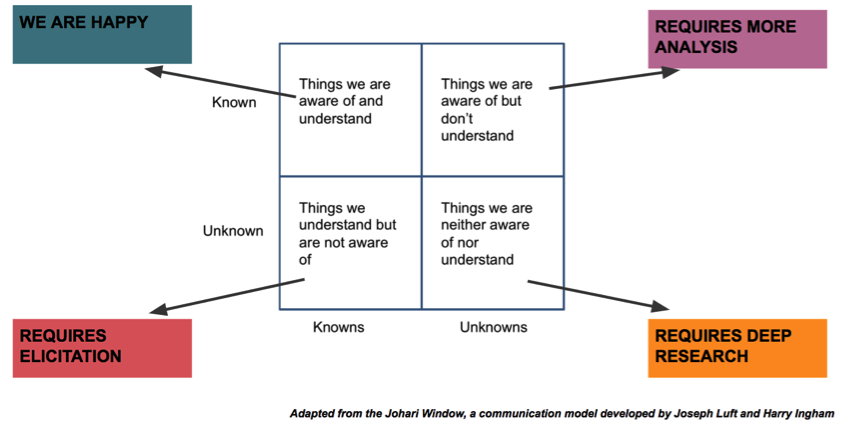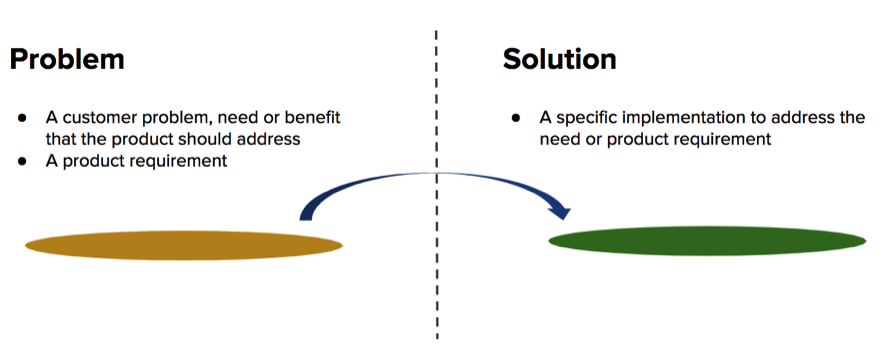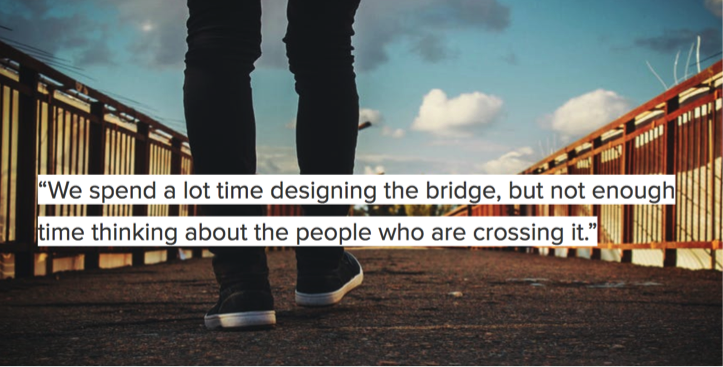When we think of the traditional business analysis methodologies applied in most of the companies, we see that the requirements are gathered from business stakeholders in a meeting room and requirement documents are prepared in detailed and the traditional way. Even so, projects fails and the primary cause of project failures is about inaccurate requirements. The most of the companies which are working in a traditional way are facing many challenges and need new design driven ways to overcome these challenges.
In new way of business analysis, primary activity is not defined as requirements gathering. It is called requirements elicitation. Gathering means the collection of obvious requirements. However, requirements elicitation involves deep research, talking and observing. It is about uncovering the real needs of the end users. And it is really important to involve users to design phase in new way of doing analysis.

CHALLENGE #1: Unclear Requirements
Unclear requirements are a top challenge for the projects. Starting with vague requirements is like heading off on a journey without knowing your destination. Requirement uncertainties originate from various causes, but yield similar results. Projects are delayed and do not fulfill the original expectations and needs.

As Business Analysts, if we know the knowns, which means the requirements, we feel confident about our analysis. If we know there are unknowns, we can handle them with more analysis.
However, we should also consider that there may be lots of known requirements which we are not aware of. This means we should do more requirement elicitation activities to understand the needs by asking the right questions to make the picture clearer.
And the last area is unknown unknowns. These are the requirements which nobody knows about. Customers also have no idea about them. We should do deep learning researches and capture the insights in order to identify the next breakthrough solution. Before Apple created it, who could say i need a smartphone!
CHALLENGE #2: Problem vs Solution
When we ask customers about what they need, they answer with a solution they think solves their problems. This is a very common trap for us. As business analysts, first we should focus on the problem where all the customers’ needs come from. Needs may be a customer pain point, a desire or a job to be done.
After a true understanding of the need and problem, we should focus on the solutions which meet the users’ needs.

Sometimes business representatives think that they have all the answers and talking with customers is a waste of time. On the contrary, a good understanding of the customer needs helps to explore new potential solutions. By asking users about their experiences and observing what they do, how they behave and what their motivations are, we can ground the innovation process with insights.
CHALLENGE #3: Connecting The Dots
There are so many dots to connect between;
- Ideas with different ideas to create new and unusual concepts
- Business with customers to gain insights
- People with services for comprehensive customer experiences
So how can we connect the dots?
Technology is evolving. But it is not enough to think about the technology alone. Similarly, thinking about the people or their experience alone will not produce an idea when we think about them separately. As business analysts, we should make the connections between them by thinking with the left and right side of the brain and seeing the real intersection between an object and its surroundings. This is not possible by looking more closely. It may be possible by seeing the big picture, understanding how objects relate to their context as well.
“Learn how to see. Realize that everything connects to everything else.”
– Leonardo Da Vinci
By spending more time with customers, we can observe and learn more about their motivations and aspirations, rather than just their needs and wants. In this way, we are more likely to do the right thing, rather than just do things right.
CHALLENGE #4: Design with Users, Not for Them

The biggest challenge of the traditional analysis meetings is questioning the real problem with business stakeholders not with the end users. Business stakeholders are just the representatives who share their desires about the product and state their business priorities. Most of the time it does not reflect the exact needs of the users.
Why waste time on a design that will need to change anyway, just because you don’t have the right people in the room? Once you have identified who the users are, they should be involved in the design process, even if they are not currently being involved.
In practice, this may be a collaborative workshop in which business stakeholders, business analysts, researchers, designers, and end-users explore a problem and generate solutions together, taking into account their different approaches, needs, and points of view. Co-creation brings together users and designers to work toward a shared goal.
How to Overcome All Those Challenges?
In order to overcome all those challenges we face in business analysis process, consider which technique or set of techniques will help you get stakeholders talking, thinking and collaborating.
Choose techniques that will create a shared understanding that gives each stakeholder a clear picture of context, user needs, and value. This means that there are clearly opportunities to embed design driven methods into the business analysis to satisfy goals and enhance user experiences.
Here are some tips:
- Due to the challenges you are facing while working in a traditional way, it is necessary for you to apply new ways of analysis which are called as “Design Thinking” and “Design Doing”.
- And, don’t forget to design WITH users, not just FOR them!
For more information about our Design Driven Business Analysis approach, just say hello to BA-WORKS Strategic Design Team.

